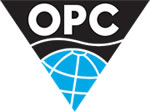
Kosmos Energy has announced its financial and operating results for the second quarter of 2025. For the quarter, the Company generated a net loss of $88 million, or $0.18 per diluted share. When adjusted for certain items that impact the comparability of results, the Company generated an adjusted net loss(1) of $93 million, or $0.19 per diluted share for the second quarter of 2025.
SECOND QUARTER 2025 HIGHLIGHTS
- Net Production(2): ~63,500 barrels of oil equivalent per day (boepd), with sales of ~73,200 boepd
- Revenues: $393 million, or $58.93 per boe (excluding the impact of derivative cash settlements)
- Production expense: $243 million ($28.22 per boe excluding $69.1 million of production expenses associated with the Greater Tortue Ahmeyim (GTA) liquefied natural gas (LNG) project
- Capital expenditures: $86 million, with full year capital expenditure guidance revised down to ~$350 million (from $400 million)
- Cash flow from operations of $127 million with free cash flow(1) of $45 million
- “Commercial Operations Date” (COD) was successfully achieved on the Gimi floating LNG (FLNG) vessel at GTA, another key milestone for the project
- During the second quarter 3.5 gross LNG cargos were lifted from the GTA project offshore Mauritania and Senegal
- Drilled and completed the first of two planned producer wells at Jubilee in 2025, with ~10,000 bopd gross initial production
- Post quarter end, indicative terms agreed for Gulf of America term loan up to $250 million to re-pay 2026 maturities
Commenting on the Company’s second quarter 2025 performance, Chairman and Chief Executive Officer Andrew G. Inglis said: 'We set out this year with three clear priorities: Increase production, reduce costs and enhance the resilience of the balance sheet. During the period we have continued to make good progress across all three areas. On production, the GTA ramp up has gone well, achieving FLNG 'Commercial Operations Date' in the second quarter, and 6.5 gross LNG cargos lifted year-to-date. We are approaching Kosmos’ record high production levels with further near-term growth expected as we push GTA towards the FLNG's 2.7 mtpa nameplate capacity and bring on more wells at Jubilee and Winterfell.
On costs, we have lowered our capital budget for the year from $400 million to around $350 million and are working hard to reduce operating costs across the portfolio, namely on GTA through the FPSO re-financing and through exploring lower-cost operating models with our partners. We also remain on track to deliver the targeted $25 million of overhead reduction by year-end.
On the balance sheet, we are enhancing resilience through increasing liquidity and additional hedges for 2026 with further progress expected as we pursue additional initiatives through the second half of the year. With production rising, costs falling and balance sheet resilience improving, we look forward to delivering long-term value for our shareholders through the second half of the year and beyond.'
FINANCIAL UPDATE
Net capital expenditure for the second quarter of 2025 was $86 million, below guidance primarily due to lower spend in Mauritania and Senegal and in the Gulf of America. In line with the Company's focus on reducing costs, full year capital expenditure is now expected to be around $350 million (from $400 million previously). We also remain on track to deliver the targeted $25 million overhead reduction by year-end.
Operating costs per barrel of oil equivalent in the second quarter were slightly higher than guidance, reflecting lower production than expected, and were higher quarter-on-quarter due to Kosmos' one scheduled TEN lifting in Ghana for 2025, which occurred in the second quarter.
The Company generated net cash provided by operating activities of approximately $127 million and free cash flow(1) of approximately $45 million.
Kosmos exited the second quarter of 2025 with approximately $2.85 billion of net debt(1) and available liquidity of approximately $400 million.
During the second quarter and into the third quarter, Kosmos continued to take advantage of periods of higher oil prices, adding more hedges as part of our rolling hedging program to provide downside protection against a volatile sector backdrop. The company now has 5 million barrels of remaining 2025 oil production hedged with a floor of approximately $62/barrel and a ceiling of approximately $77/barrel. Kosmos has also commenced hedging next year’s oil production with 7 million barrels hedged for 2026 so far with a floor of approximately $66/barrel and a ceiling of approximately $75/barrel, targeting around 50% of 2026 oil production to be hedged by year-end.
The Company successfully amended the debt cover ratio calculation for the Reserve-Based Lending (RBL) Facility, to increase the ratio for the next two scheduled financial test dates, reflecting the impact of start-up timing of the GTA project on the leverage calculation. The debt cover ratio will return to the originally agreed upon level of 3.5x for testing dates thereafter, when full year revenues from the GTA project are aligned with operating expenses.
In early August, Kosmos agreed to indicative terms for a senior secured term loan facility ('Term Facility') with an investment grade counterparty for up to $250 million, to be used for general corporate purposes, including the repayment of the Company’s outstanding 2026 unsecured notes. The Term Facility is expected to be secured against Kosmos' assets in the Gulf of America with a final maturity date four years after closing. Closing is anticipated by the end of the third quarter of 2025, subject to certain conditions including the negotiation and execution of fully-termed definitive loan documentation and certain crude oil marketing and offtake agreements.
OPERATIONAL UPDATE
Production
Total net production(2) in the second quarter of 2025 averaged approximately 63,500 boepd, lower than guidance due to the previously communicated ramp up timing on GTA and lower production at Jubilee. Full year 2025 production guidance for GTA is around 20 gross LNG cargos with production expected to increase towards the FLNG vessel’s 2.7 million tonnes per annum (mtpa) nameplate capacity in the fourth quarter. Reflecting the slower GTA ramp up and lower Jubilee production in the second quarter, full year production guidance is now expected to be between 65,000 – 70,000 boepd.
The Company exited the quarter in a net underlift position of approximately 0.3 mmboe.
Mauritania and Senegal
On GTA, the FLNG vessel successfully achieved COD in June, a significant milestone for the project, with production volumes now at a level equivalent to the annual contracted volumes of approximately 2.45 mtpa. With COD achieved, Kosmos has concluded funding a share of GTA’s capital expenditure on behalf of the national oil companies of Mauritania and Senegal.
Production in the second quarter averaged approximately 7,100 boepd net. During the quarter 3.5 gross LNG cargos were lifted with an additional 2.5 gross LNG cargos lifted post quarter end.
The partnership continues to target lower operating costs for GTA Phase 1 through startup and commissioning cost reductions, the FPSO re-financing (targeted for completion in the second half of 2025), and also through exploring alternative lower-cost operating models.
With GTA Phase 1 fully operational, we are targeting an increase in production towards the FLNG vessel's 2.7 mtpa nameplate capacity in the fourth quarter. The partnership is also focusing on future expansion phases of the field. Phase 1+, a low-cost brownfield expansion, is expected to double gas throughput by leveraging the existing infrastructure in place. With the subsurface in Phase 1 performing well, we expect future expansion phases to further reduce operating costs/boe.
Ghana
Production in Ghana averaged approximately 29,100 boepd net in the second quarter of 2025. Kosmos lifted 3 cargos from Ghana during the quarter.
At Jubilee (38.6% working interest), oil production in the second quarter averaged approximately 55,300 bopd gross, reflecting nine days of scheduled FPSO shutdown, a period of riser instability, which has since been addressed with riser base gas lift, and underperformance of certain wells in the eastern side of the field, including Jubilee Southeast. Facility uptime was 97% with voidage replacement around 104%.
The Noble Venturer rig successfully drilled and completed the first well of the 2025/26 drilling campaign. This Jubilee main field producer (J-72) encountered more pay than expected and is currently producing around 10,000 bopd gross. The 2025 rig program has been optimized to drill a second producer in the Jubilee main field. As a result the rig will now undergo a period of scheduled maintenance before drilling the second well, which is expected online around the end of the year. Following completion of the second well, the rig is scheduled to drill four additional wells on Jubilee in 2026, targeting well-defined Jubilee main field producers, supported by good adjacent well control, similar to J-72.
As previously communicated, to achieve the full production potential of the Jubilee field, a consistent drilling program is required, informed by the latest seismic technology, alongside high facility uptime and sustained water injection. The narrow-azimuth (NAZ) seismic acquired in the first quarter is now being processed and the fast-track results show a significant uplift in imaging quality. We expect the imaging quality to be further enhanced through the acquisition of ocean bottom node (OBN) seismic, which is planned for later this year. The OBN data is expected to upgrade the velocity model to further improve the NAZ processing. These enhanced seismic products are expected to benefit future drilling campaigns, identifying undrilled lobes, unswept oil, and new opportunities in Jubilee Southeast.
During the second quarter, Kosmos and partners signed a Memorandum of Understanding (MoU) with the Government of Ghana to extend the production licenses to 2040. The partnership anticipates submitting the documentation to the government shortly with formal approval expected later in the year. On completion, Kosmos expects a material uplift in 2P reserves in Ghana.
In the second quarter of 2025, Jubilee gas production net to Kosmos was approximately 5,700 boepd.
At TEN (20.4% working interest), oil production averaged approximately 15,900 bopd gross for the second quarter.
Gulf of America
Production in the Gulf of America averaged approximately 19,600 boepd net (~84% oil) during the second quarter, at the upper end of guidance. The Winterfell-4 well was successfully drilled with completion work ongoing and is expected online later in the third quarter of 2025.
On Tiberius, Kosmos (operator, 50% working interest) continues to progress the development plan with our partner Oxy (50% working interest), evaluating opportunities to improve the development through lower capital costs. Final investment decision is targeted for 2026.
On Gettysburg, a discovered resource opportunity acquired in a previous lease sale, Kosmos (25% working interest) has partnered with Shell (operator, 75% working interest), to plan and progress a low-cost, single well tie-back development to Shell’s operated-Appomattox facility.
Equatorial Guinea
Production in Equatorial Guinea averaged approximately 22,000 bopd gross and 7,700 bopd net in the second quarter. Kosmos lifted one cargo from Equatorial Guinea during the quarter. Second quarter production was impacted by subsea pump mechanical failures. The operator expects the first replacement pump to be installed in the fourth quarter with production expected to rise thereafter.
(1) A Non-GAAP measure, see attached reconciliation of non-GAAP measure.
(2) Production means net entitlement volumes. In Ghana, Equatorial Guinea, and Mauritania and Senegal this means those volumes net to Kosmos' working interest or participating interest and net of royalty or production sharing contract effect. In the Gulf of America, this means those volumes net to Kosmos' working interest and net of royalty.
Source: Kosmos Energy










